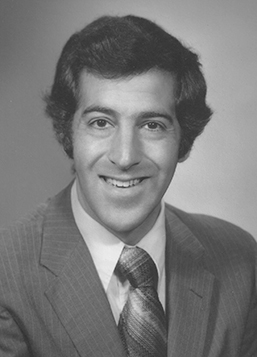
David Labson made an indelible impression on healthcare advertising by developing advanced media research techniques that had, and still have, practical application through all sectors of the healthcare industry. Drug manufacturers, advertising agencies, and journal publishers came to depend on the reliable, easy-to-use, and easy-to-explain products David created. Maybe most significantly, David was responsible for training an entire class of media personnel in the use of media metrics and fundamental media analysis.
After receiving a BS degree in pharmacy from the Medical College of Virginia—now Virginia Commonwealth University—in 1961, David went to MIT’s Sloan School of Management where he earned his MBA in 1963, and met his future wife, Lucy.
Upon graduation from Sloan, David joined Merck as one of six young men on a two-year fast-track management program that ranged from a six-month stint as a drug rep to analyzing the success potential for drugs in developing countries. He eventually left Merck to join Geigy, where he quickly rose from market research analyst to head of the department. Eager for a new challenge, David joined the Roerig division of Pfizer Pharmaceuticals as a product manager, quickly became a group product manager, and, within four years of his arrival, was named co-director of marketing.
Always restless, in 1972 David left Roerig to form his own company, Health Industries Research (HIR). Early on he held two-day seminars for medical marketers and advertisers. He employed the case-study method used at Sloan and the Harvard Business School. He found that there was little objective data on media effectiveness, and what there was, including information on journal readership, wasn’t available to agencies and publishers. David felt that agencies, which were responsible for the selection of media, and publications, that needed to tell their readership stories, should have access to data and services designed for these purposes.
In 1974, David introduced Exposure Value Audit, a research product combining qualitative and quantitative factors for media analysis, followed by the FOCUS syndicated readership/exposure study in 1976. In 1979, he introduced R2/D2, which measured duplicated and unduplicated publication readership. This was followed by a full-scale reach-frequency analysis in conjunction with the PERQ media analysis system, which started a long and mutually beneficial relationship with PERQ founder David Gideon.
Labson continued to bring new techniques to the industry. He broke out readership and exposure based on prescribing levels, patient load, and new drug adoption characteristics. When the media landscape began to change, he created FOCUS for Non-Journal Media. The creative challenge for him remained as it was in 1972: To listen to the industry’s marketers, advertisers, and publishers, and find a way to provide the information they wanted. His career was built on trust, mutual respect and fairness. More than anything else he stressed the importance of client service in connection with any product he introduced. This emphasis on service and teaching is what many felt differentiated HIR from its competitors.
HIR, in conjunction with PERQ, developed data and software that could be easily used by agency media departments. This made him a leader in introducing healthcare agencies and media departments to the world of computers. What distinguished David was his transparency in discussing his methodology and willingness to make modifications if he thought they made sense and did not violate the integrity of the overall model. He had a true partnering mindset and a youthful enthusiasm for what he was creating.
In 1986, David sold HIR to the Dutch company VNU, which merged HIR with PERQ Research. But rather than retire, Dave began a new phase of his career by forming a publishing company, Aegean Communications, Inc. With his wife Lucy as editor, the first issue of Contemporary Internal Medicine, a monthly journal for internists, was published in April 1989. From the start, his intention was to carefully apply the lessons of his research to build readership of the publication. And it worked. Unfortunately, David had only two years to plan and pursue this venture when he died in November 1990 at the very early age of 50. It was a fitting tribute to his career, his contributions to the industry, and the personal respect people had for him that an overflow crowd that included friends, colleagues and former competitors attended his memorial service.
David Labson championed the application of sound research methodology. He helped elevate the role of media departments in healthcare agencies to the same level of those in consumer agencies and trained a generation of media professionals.